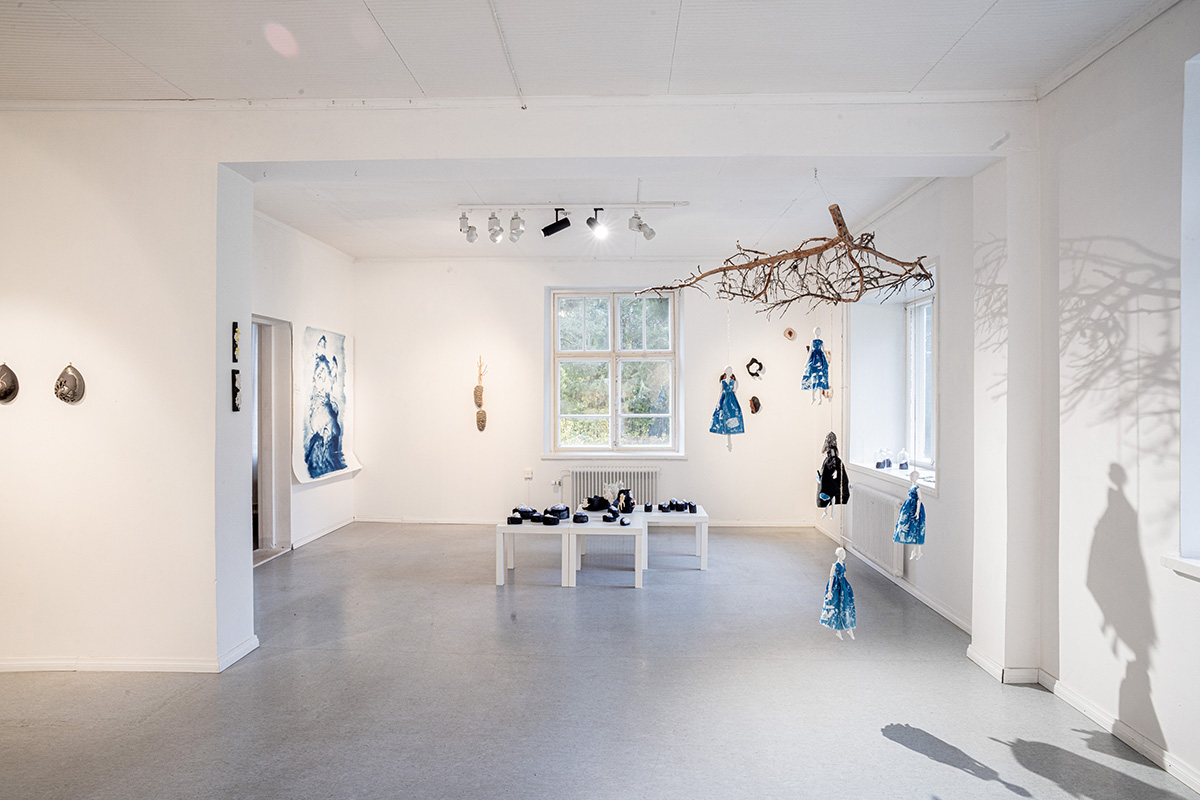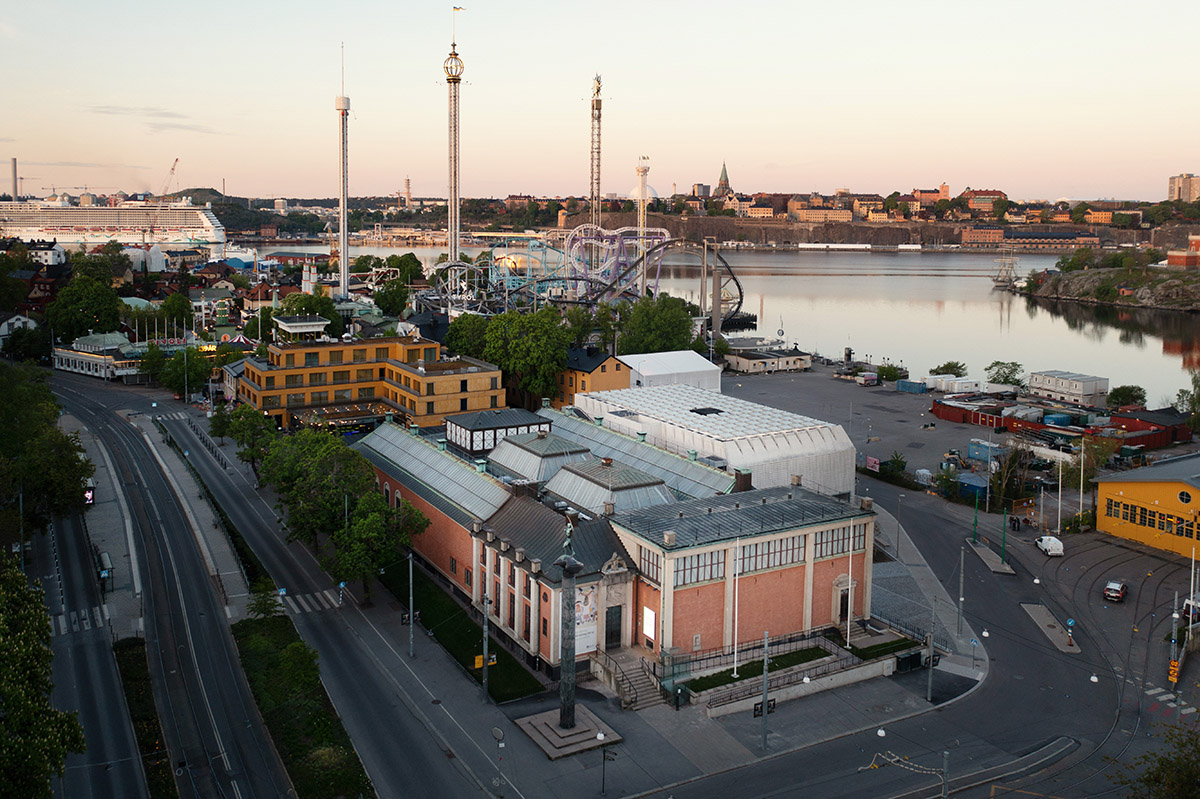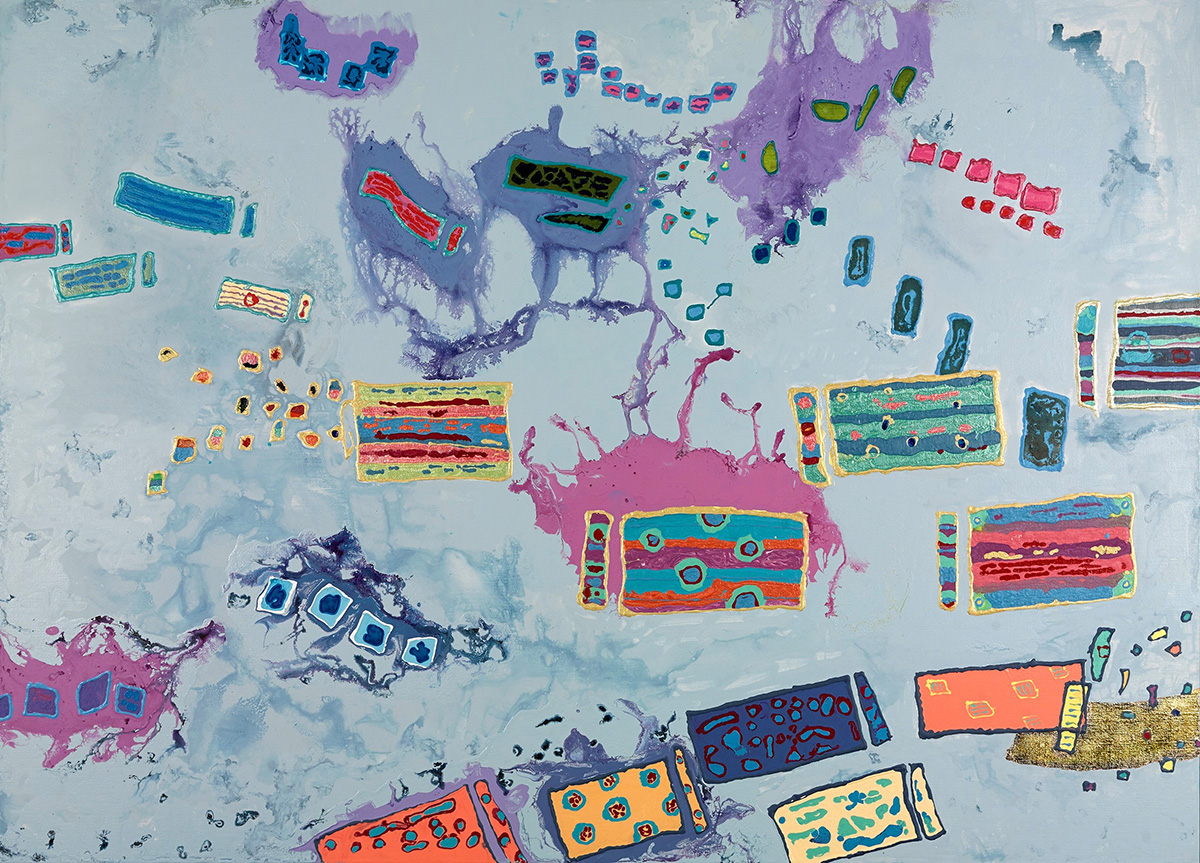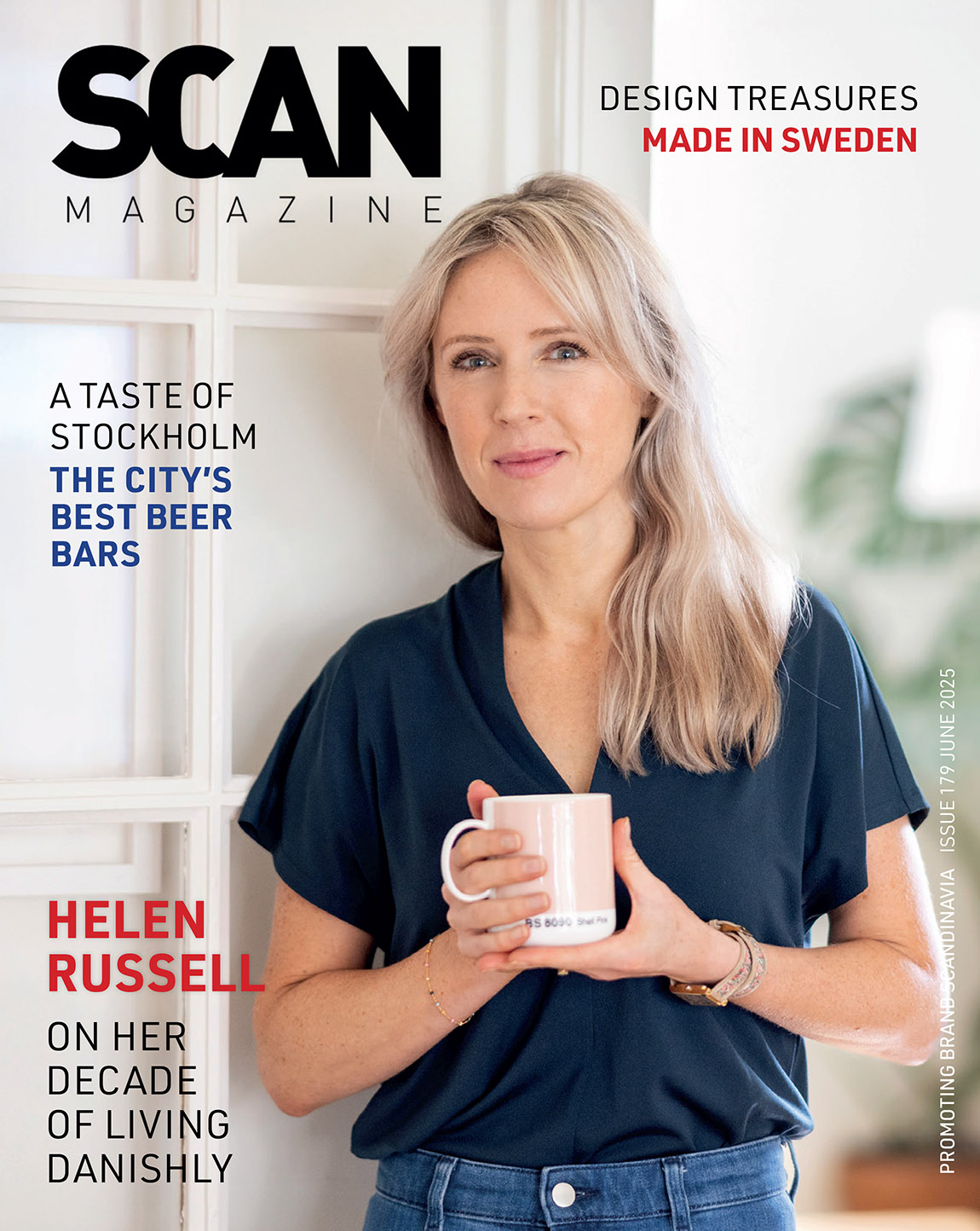Galleri Noris: A joyous gallery in Oslo
By Ingrid Opstad | Photos: Galleri Noris
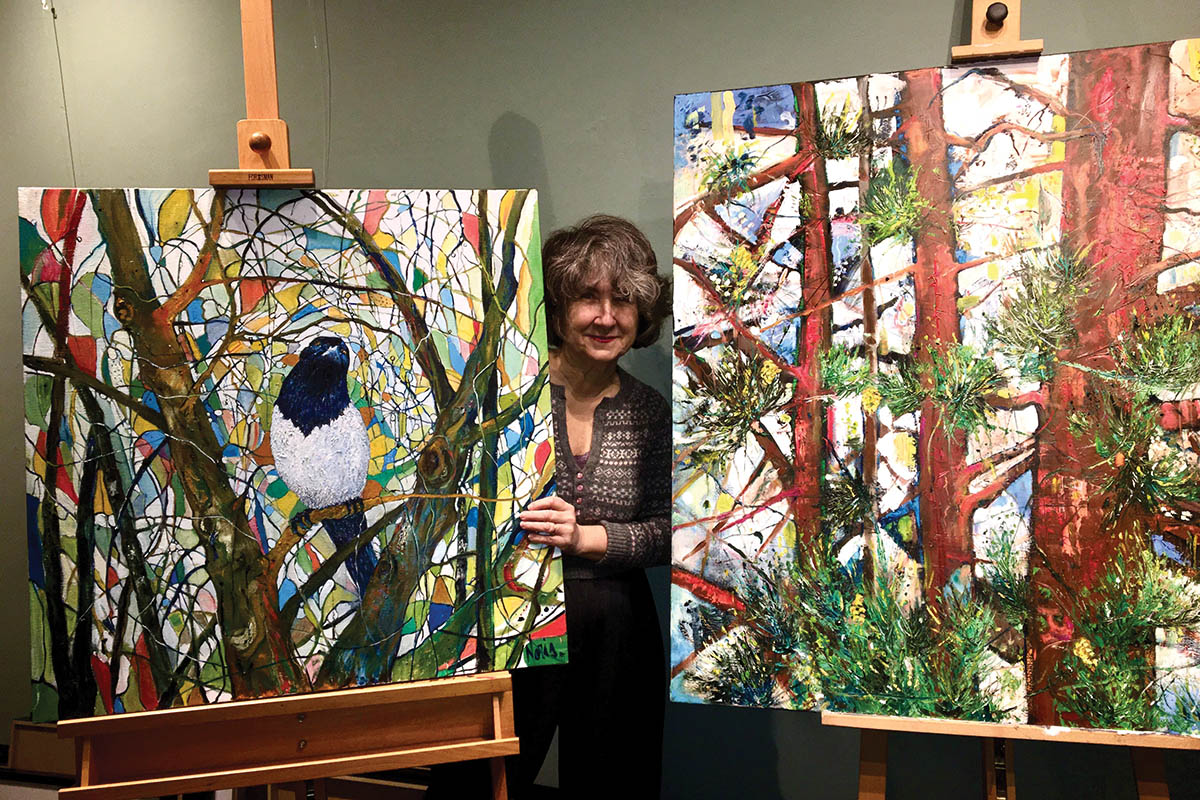
Artist and gallery owner Noris Maria Dias. Left: Skjæra. Right: A tree is a tree is a tree.
I n the middle of Oslo’s swankiest neighbourhood, Frogner, you will find a small and intimate art gallery, which is a bit different from the rest. Galleri Noris is a joyous meeting place for visual art, music, community engagement and debate, showcasing works by owner Noris Maria Dias, as well as artists from Norway and beyond.
“When I opened the gallery, I put a large sign outside saying ‘useless art’, which provoked a few different reactions from people. I wanted whoever walking past to stop and think, and hopefully wander inside to share their view on the statement because they were curious or passionate about art,” says Noris Maria Dias. The artist and gallery owner has always been fascinated with critical thinking, doing things a bit differently and spreading the joy of life and freedom. Her multicultural and multidisciplinary background has played a big role in her artistic life.
Artistic nomad life
“I was born and raised in Brazil during the military regime, which made me an anti-authoritarian, provoked by dictatorship and patriarchy; I’m a social idealist and rebel,” she explains. Dias started painting as a 14-year-old and frequented the studio of Nesmaro, an appreciated impressionist and a teacher at the Academy of Fine Arts in her hometown. When she turned 18, she travelled to Norway, Italy and France, where she studied medicine, psychotherapy and traditional Chinese medicine. She practised as a psychotherapist in all these countries.
Noris later became an art therapist and created a project in Sweden where she worked with children with post-traumatic stress syndrome. “Since I find great interest in working with people, I still receive some patients in psychotherapy,” she says. However, for the last 20 years, Noris has mainly dedicated herself to her artistic profession, participating in more than 30 exhibitions in France, Brazil, Sweden, the US and Norway.
“I have travelled extensively around the world and lived abroad for a few decades, but I have repeatedly and always come back to Oslo and especially Frogner, where it feels like time stands still when it comes to the cityscape and architecture. It brings a feeling of belonging and identity to a nomad like me,” the artist says. “Oslo is a part of my identity.”
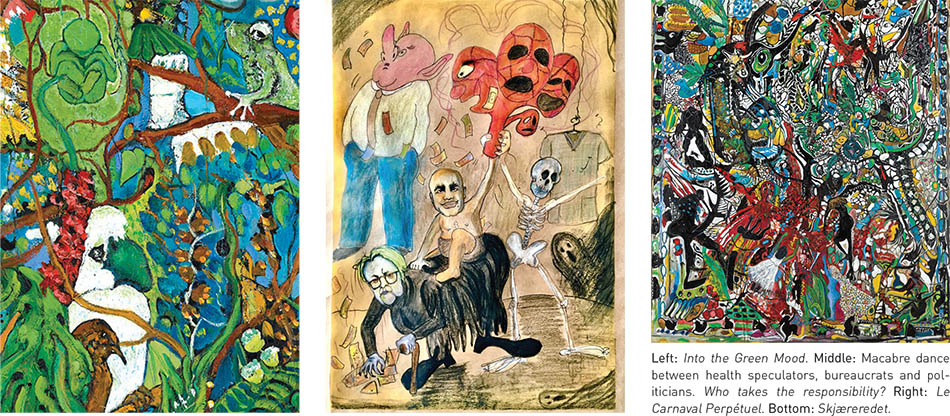
Galleri Noris opened in 2018 after Dias coincidentally discovered an empty space near Gimle Kino, an 80-year-old cinema known for showcasing art and quality films situated at Frogner. “I found it impossible not to be completely thrilled with the functionalist style and perfect location. It really awoke ideas of a new project; a place to exhibit my work while also communicating and interacting with people who share the same interests,” she says. “It is a privilege for me to have my little gallery here in this location.”
Dias wants the gallery to be an expression of what she considers to be important. “Art can be provocative, beautiful, harmonious or conflicting, but it must be meaningful in the society in which it is created,” she explains. Her aim was to create a place where anyone could come inside and stay as long as they wanted, which she has succeeded in. “Many people thank me for the experience after visiting, and many come back time after time. There is great satisfaction in getting positive confirmation like that from the audience,” the artist smiles.
“In today’s society, we are bombarded with impressions, and we don’t often have time to just observe and really see. I want the observer to really look at the art and thereby understand a little bit more of themselves,” Dias says.
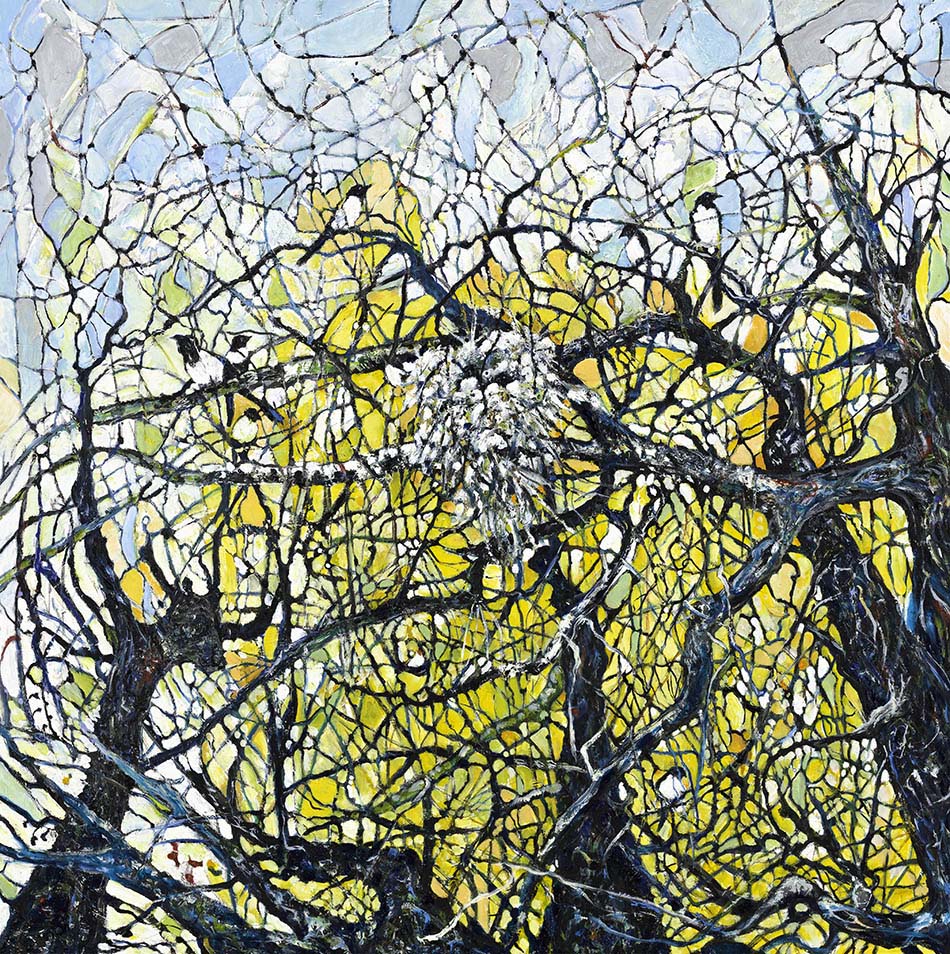
A creative meeting place
Galleri Noris has become a creative meeting place for visual art, music, community engagement and debate, showcasing works by owner Dias as well as artists from Norway and beyond. It is far from the typical modern minimalist gallery you might have seen. “I think people are a little tired of those galleries that are so clinical, where people hardly dare to enter. Noris is a warm place with strong colours, joy and a great atmosphere, which I can see that the audience appreciates,” she says.
Dias’s paintings are figurative and colourful with a lot of symbolism, which tells a story that develops as she paints, often highlighting the feminine, women’s mythology, human psychology and nature. The paintings are full of details, which the customer often catches up with after a while. “Often, customers come back to tell me what they later discovered in my art that they hadn’t seen from the start,” she says.
“My work as a painter and curator is a constant research and development process. Nowadays, the right to determine which artwork is important and valuable for us belongs to a small elite within the art industry,” Noris says. “I believe you have the right to discover, and freedom to choose, what kind of art you consider valuable. It is a matter of learning to really see, and of having no fear of loving a piece of art. There is no right or wrong, only emotions.”
Web: noris.no Facebook: noris.maria.dias.artist Instagram: @norismariadias
Subscribe to Our Newsletter
Receive our monthly newsletter by email

